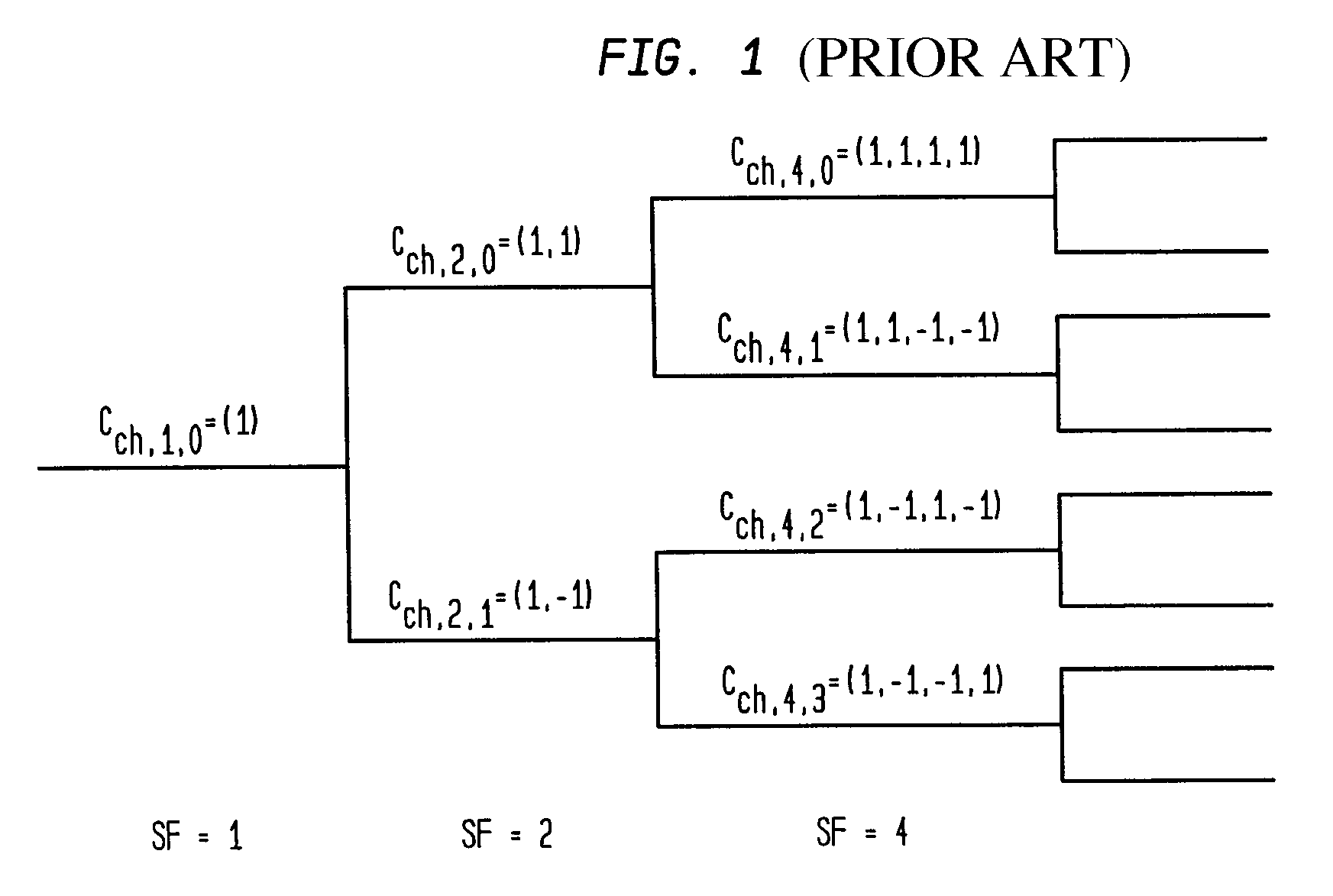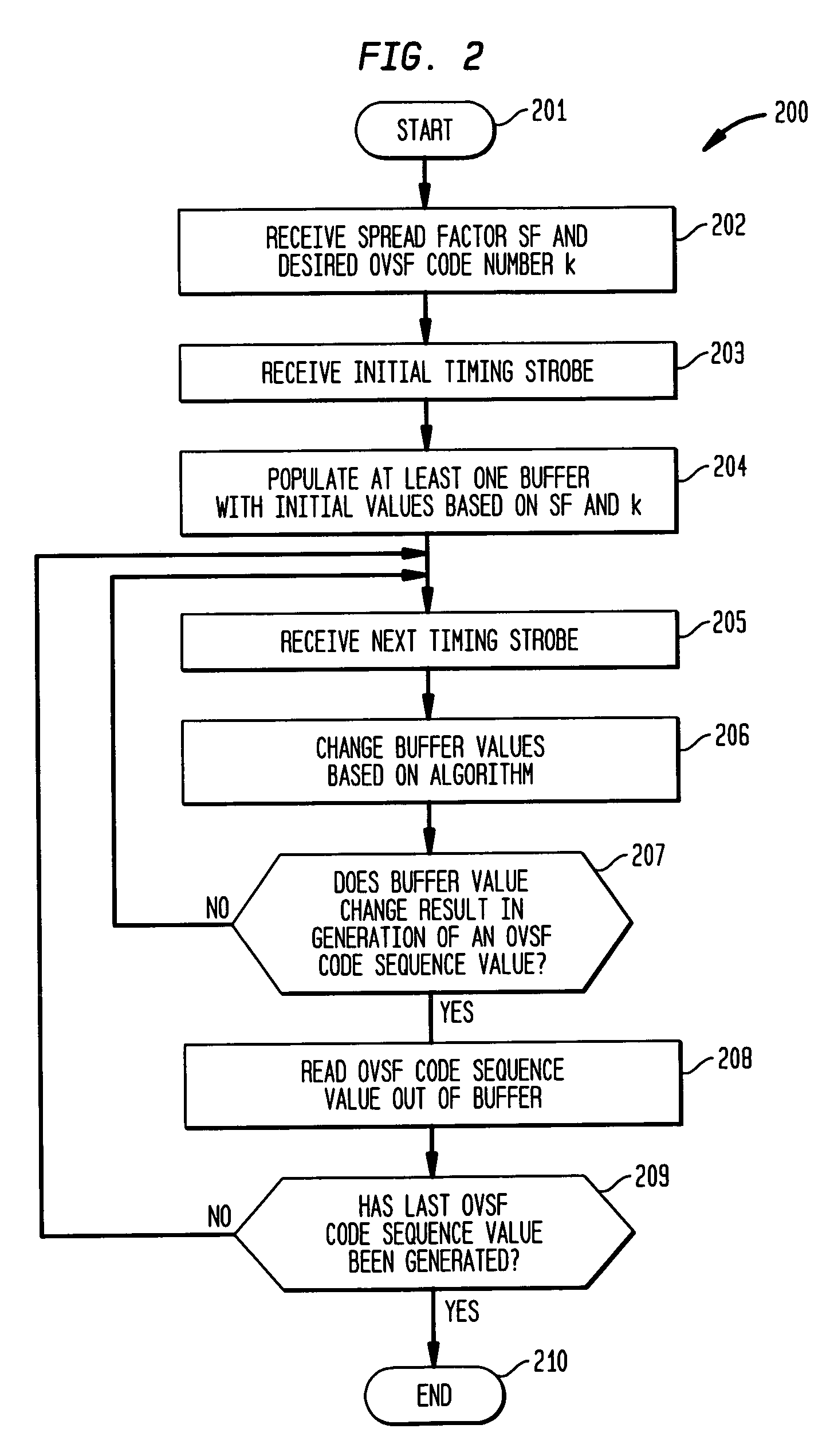Buffer-based generation of OVSF code sequences
- Summary
- Abstract
- Description
- Claims
- Application Information
AI Technical Summary
Benefits of technology
Problems solved by technology
Method used
Image
Examples
Embodiment Construction
[0018]FIG. 1 is a portion of a code tree from which OVSF codes for Third-Generation Partnership Project's Universal Mobile Telecommunications System (3GPP / UMTS) applications are selected. While the portion of the tree shown in FIG. 1 shows a pattern of codes for only spread factors 1, 2, and 4, the full tree (not shown) extends to code patterns for a spread factor of up to 512. In the code tree, the codes are uniquely identified as Cch,SF,k, where SF is the spread factor of the code and k is the code index, 0≦k≦SF−1. The 3GPP standard specifies that the code generator should be capable of producing codes with a variable spread factor over the range SF=4 to 512. (It should be understood that the invention may also have utility with non-3GPP applications, i.e., SF can be less than 4 or greater than 512.) Accordingly, in the embodiments described below, a maximum of 9 bits is needed to represent code index (or “code number”) k for all possible spread factors in the range SF=4 to 512. I...
PUM
 Login to View More
Login to View More Abstract
Description
Claims
Application Information
 Login to View More
Login to View More - R&D
- Intellectual Property
- Life Sciences
- Materials
- Tech Scout
- Unparalleled Data Quality
- Higher Quality Content
- 60% Fewer Hallucinations
Browse by: Latest US Patents, China's latest patents, Technical Efficacy Thesaurus, Application Domain, Technology Topic, Popular Technical Reports.
© 2025 PatSnap. All rights reserved.Legal|Privacy policy|Modern Slavery Act Transparency Statement|Sitemap|About US| Contact US: help@patsnap.com



